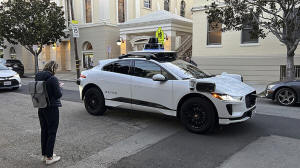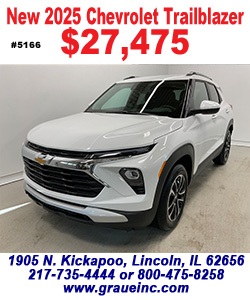Waymo's robotaxis to start carrying passengers in Atlanta, expanding
Uber partnership
[June 25, 2025] By
MICHAEL LIEDTKE
Waymo's robotaxis will begin carrying passengers through parts of
Atlanta on Tuesday in an expansion of a partnership with Uber that began
earlier this year in Austin.
Waymo's driverless march into Atlanta comes just days after Tesla
finally launched a limited robotaxi service in Austin, more than five
years after CEO Elon Musk brashly promised the electric automaker would
quickly overtake Waymo as the leader in autonomous driving technology.
Unlike Waymo's robotaxis, Tesla is initially placing a human in the
passenger seat of its rival service to take over the vehicle if
something goes wrong.
While Tesla is starting with about a dozen supervised robotaxis, Waymo
and Uber have dispatched about 100 completely driverless vehicles in
Austin less than four months after their partnership began. The
expansion into Atlanta keeps the two companies aligned with a road map
they laid out last September.
As has been the case in Austin, Waymo's robotaxis in Atlanta will be
dispatched through Uber's app. Uber will give customers a choice to
request a car operated by a human if they don't want to take a
driverless ride. The robotaxis will initially cover a 65-square-mile
(168,00-square-kilometers) area within the Atlanta market before
expanding to a larger stretch.
Waymo's own ride-hailing app is available in Phoenix, Los Angeles and a
steadily expanding swath of the San Francisco Bay Area. Factoring in its
partnership with Uber, Waymo is currently providing more than 250,000
paid rides per week — making it the early frontrunner in the
still-nascent robotaxi market.

[to top of second column] |

Waymo communications manager Julia Ilina stands next to a Waymo
driverless taxi in San Francisco, on Feb. 15, 2023. (AP Photo/Terry
Chea, File)
 But competition looms down the road
as Musk continues to insist Tesla's robotaxi service will be able to
grow quickly and Amazon gears up to bring its Zoox driverless cabs
to Las Vegas later this year — with plans to expand into San
Francisco next year. Zoox is also aiming to bring its robotaxi
service to Atlanta, although it hasn't set a target date for that
yet.
Uber once had ambitions to build robotaxis, but reversed course
after a bruising legal battle with Waymo, which alleged the
ride-hailing company stole its autonomous technology after poaching
one of its engineers. After reaching a $245 million settlement with
Waymo, Uber eventually sold its self-driving vehicle division
following a 2018 crash that killed a pedestrian in Tempe, Arizona.
Uber then pivoted to robotaxi partnerships to remain competitive as
driverless cabs reshape the ride-hailing market. “By integrating
Waymo’s cutting-edge technology into the Uber platform, we’re
continuing to make transportation more convenient, sustainable, and
reliable,” said Sarfraz Maredia, who oversees Uber's efforts in
autonomous driving.
With 18 different robotaxi partnerships in place around the world,
Uber says it is on pace to make about 1.5 million annual driverless
trips that either transport passengers or deliver food.
All contents © copyright 2025 Associated Press. All rights reserved |